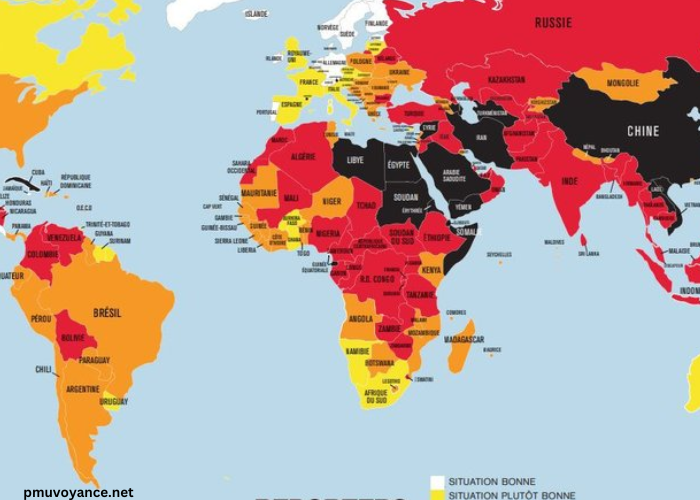In the ever-evolving world of journalism and media, understanding how publications are ranked and assessed is crucial for both consumers and professionals. The Classement DE LA Presse provides a systematic approach to evaluating media outlets based on various criteria, including readership, influence, and reliability. This ranking not only serves as a tool for consumers to navigate the vast sea of information but also acts as a benchmark for publishers striving to improve their standing in the competitive media landscape.
This article aims to explore the various facets of Classement DE LA Presse, including its methodology, significance, and implications for both consumers and media professionals. Through detailed analysis, we will uncover the importance of media rankings and how they shape public perception and media strategies.
What Is “Classement DE LA Presse”?
The term Classement DE LA Presse refers to the systematic ranking of media outlets based on predetermined criteria. This ranking often considers factors such as circulation numbers, digital presence, audience engagement, and credibility. The primary goal of such a classification is to provide a transparent and reliable way for consumers to assess the quality and reach of different media sources.
For instance, a publication with a higher ranking in the Classement DE LA Presse is typically perceived as more influential and trustworthy. This perception can significantly impact advertising revenues and partnerships, as advertisers often seek to collaborate with top-ranked media outlets.
How Is “Classement DE LA Presse” Conducted?
The methodology behind the Classement DE LA Presse can vary widely among organizations. Typically, these rankings are derived from a combination of quantitative and qualitative data. Key factors often include:
- Circulation Figures: This includes both print and digital subscriptions. Higher circulation indicates a broader reach and greater influence in public discourse.
- Online Engagement: Metrics such as website traffic, social media shares, and interaction rates provide insights into how well a publication engages with its audience.
- Reputation and Credibility: Surveys and expert assessments often play a role in determining how the public and industry peers perceive a publication’s reliability and integrity.
- Content Quality: Evaluations of journalism quality, including investigative reporting and adherence to ethical standards, can influence rankings.
- Audience Demographics: Understanding who reads a publication—age, education, location—can also impact its standing within the Classement DE LA Presse.
By employing a mix of these methods, organizations can create a comprehensive ranking that reflects the current media landscape.
Why Is “Classement DE LA Presse” Important?
The significance of Classement DE LA Presse extends beyond mere numbers; it shapes the media environment in various ways. For consumers, these rankings provide a trusted framework to identify reputable sources of information. In a world rife with misinformation, understanding which outlets are recognized for their credibility is invaluable.
For media professionals and publishers, being ranked highly can lead to increased visibility and advertising opportunities. High rankings often attract both readers and advertisers, creating a cycle that benefits the publication’s bottom line. Furthermore, rankings can motivate organizations to improve their content and practices, fostering a healthier media ecosystem.
What Are the Challenges of “Classement DE LA Presse”?
While Classement DE LA Presse serves multiple beneficial purposes, it also faces challenges and criticisms. One of the primary concerns is the potential for bias in the ranking process. If the criteria or methodology are not transparent, it can lead to questions about the integrity of the rankings. For instance, if a publication with significant advertising partnerships receives a higher rank, it could be seen as a conflict of interest.
Another challenge is the rapidly changing media landscape. With the rise of digital platforms and social media, traditional metrics may no longer adequately represent a publication’s influence or credibility. For example, a lesser-known blog may have a smaller readership but a highly engaged audience, which traditional rankings may overlook.
Additionally, the focus on quantitative metrics can sometimes overshadow qualitative aspects of journalism, such as depth, storytelling quality, and ethical reporting. Therefore, it’s essential for ranking organizations to continuously adapt their methodologies to reflect the changing media environment.
How Do Different Media Outlets Use “Classement DE LA Presse”?
Media outlets often leverage their standing in the Classement DE LA Presse to enhance their brand image and marketability. A high ranking can be showcased in marketing materials, press releases, and advertising campaigns. For example, a news organization that ranks in the top tier may prominently display this achievement on its website to attract more readers and advertisers.
Moreover, rankings can influence editorial decisions. A publication that knows it is being closely monitored may prioritize quality journalism and ethical reporting to maintain or improve its rank. This awareness can lead to a positive feedback loop, where higher standards of journalism contribute to better rankings.
Additionally, the Classement DE LA Presse can also impact hiring practices. Media outlets may seek out top talent to uphold or enhance their reputation, knowing that the quality of their team can influence their ranking.
What Role Does Public Perception Play in “Classement DE LA Presse”?
Public perception is a significant factor in the evaluation of media outlets within the Classement DE LA Presse. The way audiences view a publication can affect its credibility and, consequently, its ranking. Surveys and feedback mechanisms are often employed to gauge public opinion, and these insights can inform ranking decisions.
For example, if a publication is perceived as biased or unreliable, it may receive lower marks in credibility assessments, even if it has high circulation numbers. Conversely, a smaller publication that is viewed favorably by its audience may outperform larger competitors in rankings due to its strong reputation.
This interplay between public perception and ranking underscores the importance of maintaining ethical journalism practices. Media outlets that prioritize transparency and accountability are more likely to enjoy positive public perception and, therefore, better rankings.
How Can Consumers Use “Classement DE LA Presse”?
For consumers, understanding the Classement DE LA Presse can significantly enhance their media literacy. By familiarizing themselves with these rankings, readers can make informed choices about where to get their news and information. This knowledge is particularly valuable in an age where misinformation can spread rapidly.
Consumers can use the rankings to assess the credibility of various publications. For instance, if a reader is interested in a particular news topic, they can refer to the rankings to identify which outlets are recognized for their quality coverage of that subject.
Moreover, rankings can help consumers diversify their media consumption. By exploring various publications within the top ranks, readers can gain a more comprehensive understanding of different perspectives and narratives surrounding important issues.
Conclusion
In conclusion, the Classement DE LA Presse plays a crucial role in shaping the media landscape by providing a structured approach to evaluating media outlets. Its significance extends to consumers, media professionals, and the overall health of journalism. While challenges remain in terms of bias and evolving media dynamics, understanding these rankings can empower readers to navigate the complex world of information more effectively.
As the media landscape continues to evolve, the methodologies behind the Classement DE LA Presse must adapt to remain relevant. For both consumers and media professionals, engaging with these rankings can foster a more informed public and contribute to the ongoing pursuit of high-quality journalism. By staying aware of the rankings and their implications, individuals can make more educated choices in their media consumption, ultimately enriching their understanding of the world around them.



